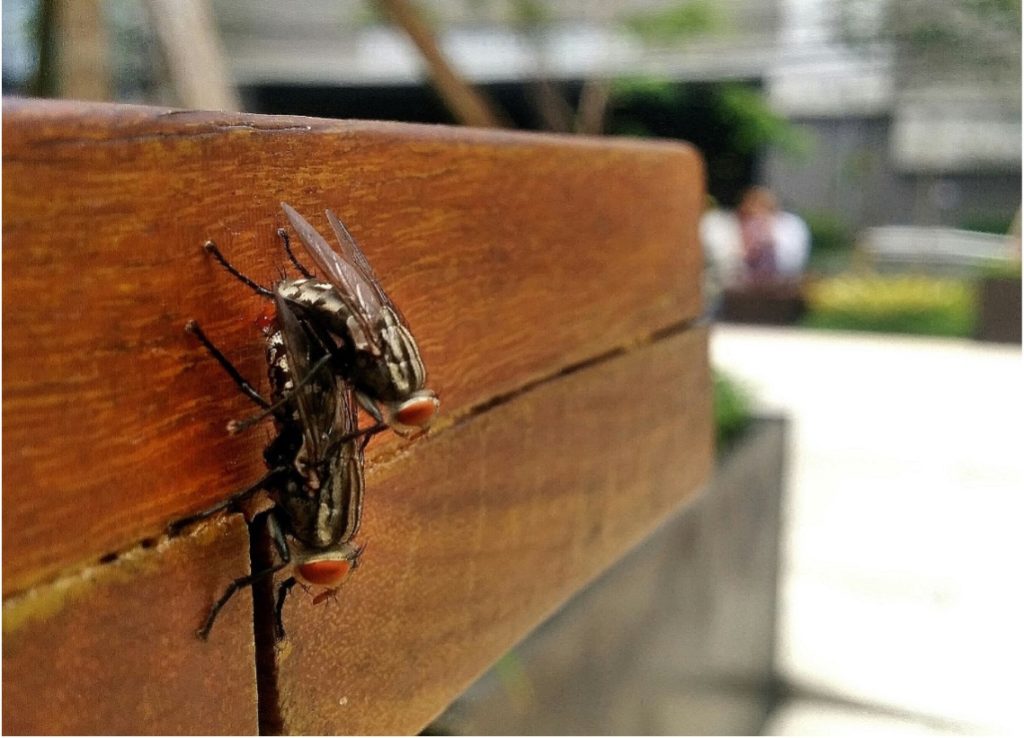Spring! After a long cold winter, Australians love the warmth and sunshine that comes with spring. It feels great to get outside again, whether that is to spend time with friends enjoying the great outdoors, or just potter in the garden. But this is the time of year that flies get cracking too! Have you noticed that every time the sun comes out, so do the flies? They are great at finding a spot in the sun to bask, warming their bodies enough to become active and start looking for food. Where do they come from?In temperate regions of Australia where it has been cold and wet over the winter, many flies start emerging from their pupae in the ground in spring. Following a change in the soil temperature which signals the arrival of spring, they complete their development underground and crawl up to the soil surface to begin life as an adult fly. When they first emerge, they are immature and are driven to find and feed on the foodstuffs they need (usually rotting material or manure) to become mature enough start mating and laying eggs. They mature slowly at this time of year – often taking weeks to become sexually mature. That’s because their development depends on ambient temperatures being warm enough, and in spring, the length of the warm part of the day is short compared to summertime.

What does this mean for you? At this time of year, you have a window of opportunity to thin out fly populations a little before they start reproducing. By getting your traps out early, you will be able to remove a portion of that founding generation of flies. While the numbers you catch now may not be as large and impressive as when you trap later in the summer, you may find that by lowering your starting population of flies in the local area, you end up with less of a problem later in the season

Let’s face it, you will never get rid of all flies, and that’s ok, because they do have a place in our ecosystem – helping to remove rotting organic material and waste. However, they also carry disease and can impact on our wellbeing when they become too much of a nuisance. So, the trick is to find the balance and manage their numbers to a level which is acceptable to you. The beauty of using EnviroSafe traps is that you are fully in control. Unlike insecticides which can non-specifically and invisibly kill all sorts of insects long after you have applied the chemical, with traps you can decide where and for how long you want to trap, and you can stop when you feel you have the problem under control.
So, if you want to get ahead of the fly problem this season, set your traps as soon as you notice fly activity, making sure they are in the sunniest spot you can find on your property. Don’t be disappointed if the traps don’t fill up in the same way that they do in mid-summer because at this time of year, your aim is different – it is just to reduce the size of that starting population while they are still immature. In this way you can put a brake on the growth of the local fly population and impact the peak population size later in summer. EnviroSafe! Helping you enjoy summer outdoors.

